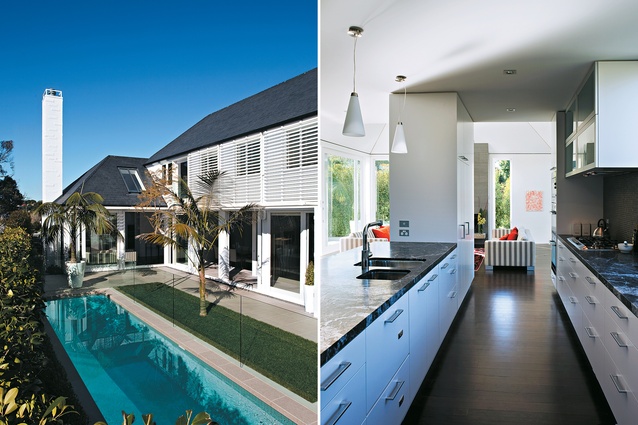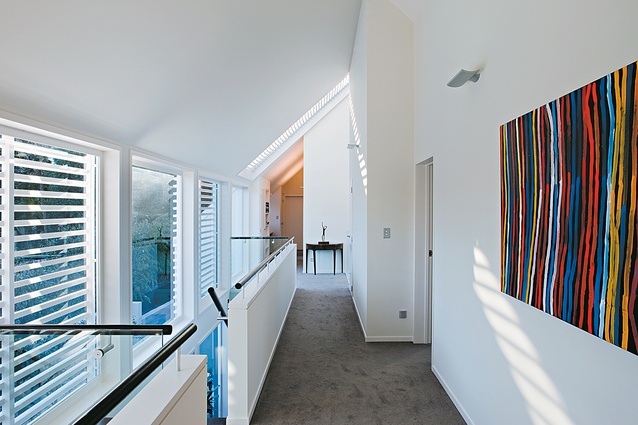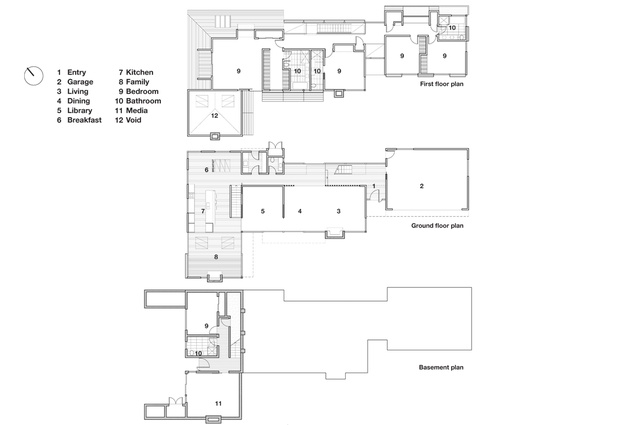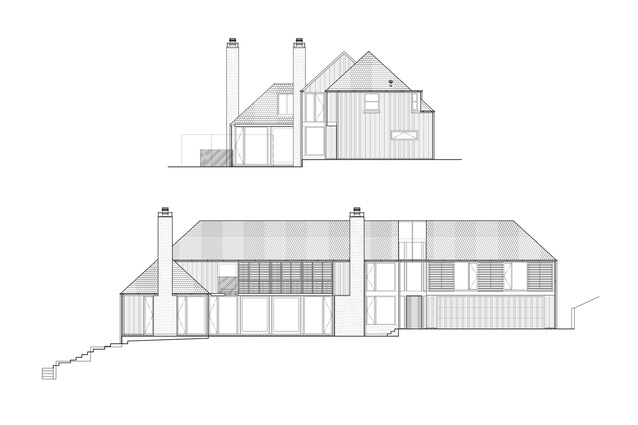Houses Revisited: Arney Road House
Revisit this home, where Robin O’Donnell Architects demonstrates a command of space and light in Auckland's Remuera.
On a prestigious Auckland street, tucked away behind a restored Arts and Crafts mansion, Cape Cod has come to Remuera. Presented with a 750m2 site that was once the tennis court of the Arts and Crafts house, architect Robin O’Donnell turned for inspiration to the work of veteran American architect Hugh Newell Jacobsen. “He does a lot of white, north-eastern seaboard colonial-style houses,” says O’Donnell. “I wanted that classic and ageless aesthetic for this project.”
Jacobsen, a one–time apprentice of Philip Johnson who has led a practice based in Washington D.C. for nearly 50 years, believes the quality of the light on a particular site must determine the architecture. Robin O’Donnell shares that conviction. An earlier plan for a house on the low-lying site “turned its back to the west”, ignoring a splendid view of Mt Hobson and disregarding the potential for bringing in afternoon sun. In contrast, O’Donnell has worked hard to ensure maximum sunlight by designing a small west-facing courtyard as well as a terrace and rear garden, and including a proliferation of windows and skylights.
The three-storey family house, clad in white shiplap boarding, is entered either through a three-car garage or the wide front door, painted in soft grey. Both ways in lead into a double storied “entrance gallery” facing the western courtyard. Dark-stained Victorian ash floorboards, used throughout the house, lend a subtle richness while muted colours on the walls enhance the sense of space.
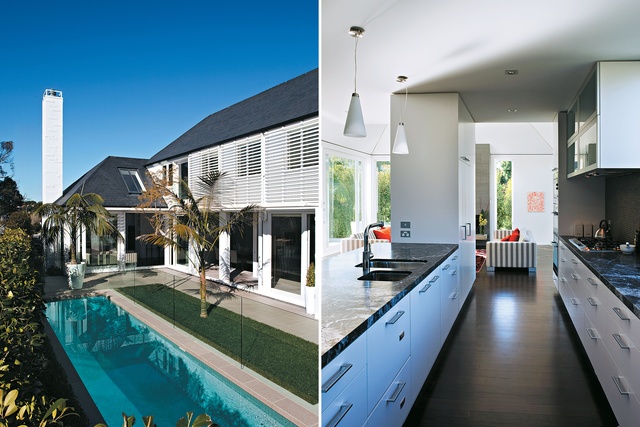
A steel staircase to the upper floor incorporates solid wood treads and a glass balustrade, reflecting “a mix of idioms” that O’Donnell has brought to his design. “I wanted [the house] to be both modern and traditional at the same time,” he says. “It’s a cross-dresser, in a way.”
If so, then it’s a supremely elegant cross-dresser with a touch of preppy privilege. From the entrance hall, two steps lead down to a large formal sitting room, which includes plenty of space for a dining table. A modern coal-effect gas fire adds warmth, although the house is centrally heated. Next door, a library, currently used as a dining room, shares the view out onto a sheltered terrace, complete with a rectangular 10 x 2.2 metre swimming pool.
At the rear of the ground floor the vaulted “cathedral” ceiling of a family room soars to a height of 5.5 metres. Wide sliding doors provide access to both the terrace and a glass-balustraded balcony with a view over the rear garden. One unusual touch is that the generously sized kitchen, while connected to the family room, is “contained”.
O’Donnell says he is not a fan of the big, open-plan kitchens that have been popular in recent years. Rather, he prefers “a range of rooms” that the occupants can use simultaneously. With that aim, he has incorporated a breakfast room on the far side of the kitchen complete with a skylight, “which captures some lovely western light”.
A laundry room provides access to the courtyard and the garden, while stairs further along a central hallway lead down to the basement. This lower level houses a spare bedroom and bathroom, plus a media room – complete with an entire wall of professional acoustic panelling to provide the best possible sound. The same attention to detail is evident on the top storey of the house.

A children’s wing contains two spacious bedrooms, a study alcove and a bathroom, while a guest bedroom has a bathroom ensuite. The master bedroom runs to 31m2, with an enclosed balcony on the southern side and another overlooking the terrace – “a parent can be upstairs while also listening to the children splashing in the pool”. A separate dressing room leads into an ensuite bathroom fitted with double basins, a bath and a shower with a plate-sized “drencher” head.
A distinctive feature of the house is a series of fixed outside louvres added at strategic points both for privacy and, O’Donnell says, “to play exterior tricks” and “add levity” to the design. He says the high quality of the detailing throughout the house was possible largely because his engaged client has a strong interest in architecture. (The two previously worked together on the renovation and extension of the Arts and Crafts house up the drive).
In O’Donnell’s opinion, individuality is making a comeback: “People are a little bit tired of the cookie cutter approach and when they’re spending a substantial amount on a home they want something special. Quite a lot of the designs around here are not particularly bespoke – you could be sitting in a large house in Pakuranga. But with the elevated price levels in Remuera now, that just won’t cut the mustard.”

Like many Remuera dwellings, O’Donnell’s Cape-Cod style house is substantial; it’s more than 500m2 in area. Does the architect ever wonder why a family would need such so much space? O’Donnell laughs. “Yes, I do, actually. But, interestingly enough, I could probably live in this house, which is not true of all the projects we’ve done. A lot of houses are like church halls rather than homes, whereas this one, although it’s large, it has a sense of progression and the spaces are not over-scaled. You get that sense of being enclosed.”
He’s right; there’s a nice, relaxed generosity about this house, which is big but never seems bloated. The architecture does not scream for attention, but performs its task of creating a comfortable domestic environment.
“People look good in my buildings,” states Hugh Newell Jacobsen. Robin O’Donnell’s hope is that people will also feel good in his. And his favourite spot in this house? In the family room, he says, looking through to the terrace, and watching the interplay of light and patterns created by the outside louvres. “Nature does it for us,” the architect says. “We just have to add the right things to a building, and it’s all there.”
This article first appeared in Houses magazine



